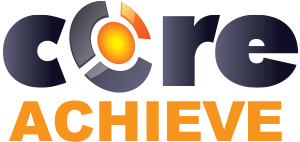The Future of Learning: How SaaS LMS Is Shaping Training
September, 07 2023
Other posts:
Enhancing Team Dynamics for Effective Group Decision-Making with LMS Integration
Organizations increasingly rely on collaborative efforts to solve complex problems, innovate, and adapt to change, but how do we ensure that collaboration is happening.
Maximizing Small Business Potential with Training Technology
Training technologies can push small businesses ahead of their competitors, but what are the factors that go into choosing the right technology?
Unlocking Employee Potential: The Transformative Benefits of an Interactive Learning Management System (LMS)
Interactive training allows for unlocking employee potential, but how is it done?
Building a Robust Sales Pipeline with Training
Every organization wants a streamlined sales pipeline, but building one requires a series of interlocking activities with one of the most important being training.
Strategies for Adapting In-Person Training to Online Platforms
Online training is one of the most flexible ways of delivering training across organizations, but how do you even begin to adapt in-person training into online?
Software as a Service (SaaS) is everywhere now, especially because it removes the need for installations. How does SaaS effect an LMS?
For most organizations it’s not feasible to maintain traditional training with in-person instructors, materials, and environments. A Far more adaptable approach is a Software as a Service (SaaS) Learning Management System (LMS), which allows for training content delivered in a much more efficient way. This impact is so big that it changed the training and learning landscape permanently.
The SaaS LMS Standard
SaaS LMS platforms have become the new standard for training due to their accessibility, scalability, and versatility. These cloud-based systems offer a wide range of features that enhance the learning experience for trainees, instructors, and administrators alike. The abilities offered by a SaaS LMS are vastly different than those offered by traditional training, features like learning paths, real-time feedback, and flexibility are just a few.
Accessible Anytime, Anywhere
One of the most significant advantages of SaaS LMS is its accessibility. Learners no longer need to be tethered to a physical place; they can access an organization’s content from anywhere with a web browser and internet connection. Naturally, this accessibility enables enterprises, small organizations, or volunteers to be trained regardless of their time or location.
Personalized Learning Paths
SaaS LMS platforms can leverage data analytics to personalize learning paths for each learner. These systems assess individual strengths and weaknesses, allowing trainers to tailor content and assignments to specific locations, titles, or positions. The result is a more engaging and effective learning experience that caters to the unique needs of each learner.
Collaborative Learning
Collaboration is a cornerstone of effective learning, and SaaS LMS platforms facilitate it seamlessly. Learners can collaborate or engage in real-time discussions about their training.
Rich Multimedia Content
SaaS LMS platforms support multimedia content such as videos, interactive simulations, and gamified exercises. This multimedia-rich approach makes learning more engaging and enjoyable. Visual aids, animations, and simulations help learners grasp complex concepts, making training more enjoyable and effective.
Real-Time Assessment and Feedback
Instant feedback is crucial for effective training. SaaS LMS systems enable real-time assessment, allowing educators to evaluate assignments, quizzes, and exams promptly. Learners receive immediate feedback, helping them identify areas for improvement and reinforcing their understanding of the subject matter.
Data-Driven Decision-Making
Educators and institutions can harness the power of data analytics provided by SaaS LMS platforms. By analyzing learner performance data, organizations can identify trends, assess the effectiveness of teaching methods, and make data-driven decisions to continuously improve the quality of education.
Integration with New Technologies
SaaS LMS platforms can seamlessly integrate with various educational technologies, such as virtual reality (VR), augmented reality (AR), and artificial intelligence (AI). These integrations open new possibilities for immersive learning experiences, further enhancing student engagement and understanding.
Scalability and Cost Efficiency
SaaS LMS platforms are highly scalable, making them suitable for organizations of all sizes and stages. Whether it's a small non-profit or an enterprise, SaaS LMS solutions can adapt to the organization's specific needs. Moreover, the cost-efficiency of cloud-based systems allows organizations to allocate resources more effectively, like in the case of training changing over the seasons.
Continuous Learning
Organizations must begin implementing continuous learning into their culture to stay relevant. SaaS LMS platforms support this concept by providing access to a vast repository of courses and resources beyond formal education. Individuals can upskill, reskill, and pursue lifelong learning to stay relevant in a rapidly changing job market.
Constantly Evolving
SaaS has become an industry standard, and for good reason, it allows an extremely flexible, off-loaded tools for organizations. As the training landscape continues to evolve, SaaS LMS will play an increasingly pivotal role in shaping the way we acquire knowledge and skills.
Get started with CoreAchieve, the premier SaaS LMS, for free.
Photo by Rene Röhmer on Unsplash

Leave comment: